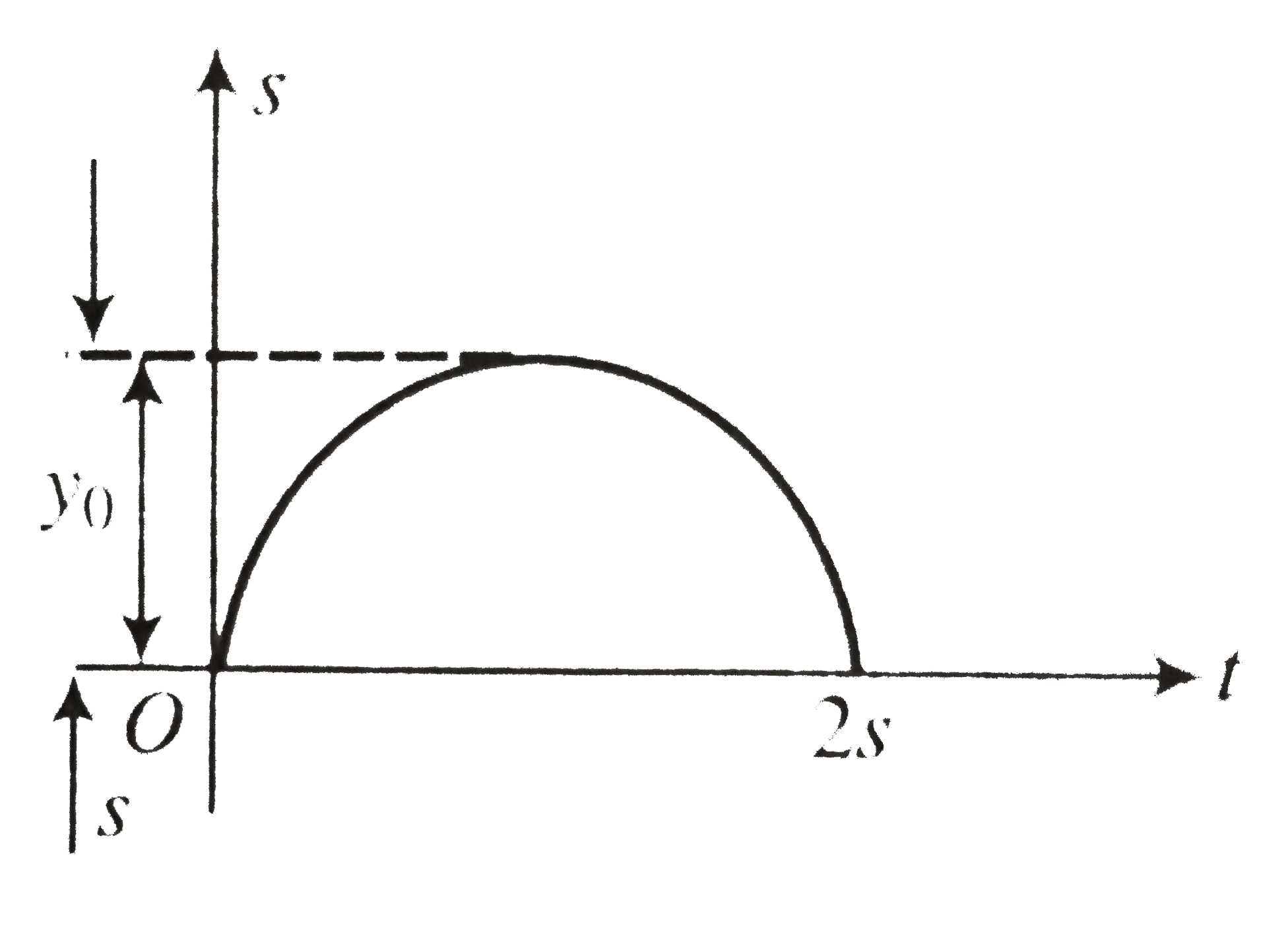A particle is moving along x-axis such that its velocity varies with time according to v=(3m/s2)t−(2m/s3)t2. Find the velocity at t = 1 s and average velocity of the particle for the interval t = 0 to t = 5 s.
To solve the problem step by step, we need to find the velocity of the particle at t=1 second and the average velocity over the interval from t=0 to t=5 seconds.
Step 1: Find the velocity at t=1 second
The velocity function is given by:
v(t)=(3m/s2)t−(2m/s3)t2
Substituting t=1 second into the equation:
v(1)=3(1)−2(12)
Calculating this:
v(1)=3−2=1m/s
Step 2: Find the average velocity from t=0 to t=5 seconds
The average velocity Vavg over a time interval can be calculated using the formula:
Vavg=1t2−t1∫t2t1v(t)dt
Here, t1=0 and t2=5. Thus, we need to compute:
Vavg=15−0∫50(3t−2t2)dt
Calculating the integral:
∫(3t−2t2)dt=3t22−2t33
Now, we evaluate this from 0 to 5:
(3(52)2−2(53)3)−(3(02)2−2(03)3)
Calculating the terms:
1. For t=5:
3(25)2−2(125)3=752−2503
To combine these fractions, we find a common denominator, which is 6:
752=2256,2503=5006
Thus:
2256−5006=225−5006=−2756
2. For t=0:
(0)−(0)=0
So, the definite integral from 0 to 5 is:
∫50(3t−2t2)dt=−2756
Now substituting back into the average velocity formula:
Vavg=15(−2756)=−27530=−556m/s
Final Answers
- Velocity at t=1 second: 1m/s
- Average velocity from t=0 to t=5 seconds: −556m/s
- Average velocity from t=0 to t=5 seconds: −556m/s
Topper's Solved these Questions
- BOOK - AAKASH INSTITUTE ENGLISHCHAPTER - MOTION IN STRAIGHT LINEEXERCISE - Try Yourself40videos
MOTION IN STRAIGHT LINE
- BOOK - AAKASH INSTITUTE ENGLISHCHAPTER - MOTION IN STRAIGHT LINEEXERCISE - Assignment (SECTION - A)50videos
MOTION IN STRAIGHT LINE
- BOOK - AAKASH INSTITUTE ENGLISHCHAPTER - MOTION IN A STRAIGHT LINEEXERCISE - ASSIGNMENT (SECTION - D)15videos
MOTION IN A STRAIGHT LINE
- BOOK - AAKASH INSTITUTE ENGLISHCHAPTER - MOVING CHARGE AND MAGNESIUMEXERCISE - SECTION D16videos
MOVING CHARGE AND MAGNESIUM
Similar Questions
The velocity of a particle is zero at time t = 2s, then
View SolutionA particle moves along X-axis in such a way that its coordinate X varies with time t according to the equation x=(2−5t+6t2)m. The initial velocity of the particle is
View SolutionA particle is moving in a straight line such that its distance s at any time t is given by s=t44−2t3+4t2−7. Find when its velocity is maximum
View SolutionA particle moves rectilinearly possessing a parabolic s-t graph. Find the average velocity of the particle over a time interval from t=12s→t=1.5s.
 View Solution
View SolutionIf acceleration a(t)=3t2 and initial velocity u=0 m/s , then the velocity of the particle after time t=4 s
View SolutionA particle is moving along x-axis. Its X-coordinate varies with time as, X=2t2+4t−6 Here, X is in metres and t in seconds. Find average velocity between the time interval t=0→t=2s.
View SolutionA particle moves along x− axis. It's velocity is a function of time according to relation V=(3t2−18t+24)m/s assume at t=0 particle is at origin.
Distance travelled by particle in 0 to 3 second time interval is :View SolutionA particle starts moving rectilinearly at time t=0 such that its velocity v changes with time t according to the equation v=t2−t, where t is in seconds and v in s−1. Find the time interval for which the particle retards.
View SolutionA particle is moving on a straight line with velocity (v) as a function of time (t) according to relation v=(5t2−3t+2)m/s . Now give the answer of following questions :
Velocity of particle at t = 3 sec. is :View SolutionA particle moving in a straight line has its velocit varying with time according to relation v=t2−6t+8(m/s) where t is in seconds. The CORRECT statement(s) about motion of this particle is/are:-
View Solution

